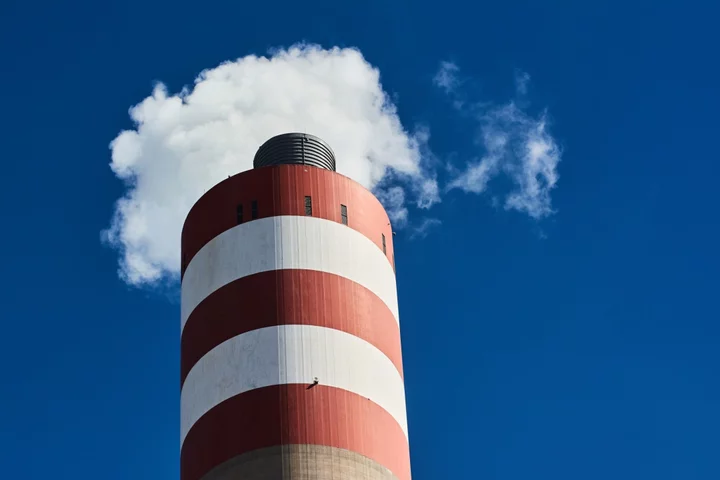
rf IDEAS, Manufacturer of Credential Readers for Authentication and Logical Access, Announces Partnership With Soloinsight, Specializing in Cyber-Physical Identity Convergence, to Offer a More Secure and Reliable Access Management Solution
CHICAGO--(BUSINESS WIRE)--Jul 13, 2023--
2023-07-13 20:16

Secure a lifetime subscription to this premium password manager for under £50
TL;DR: A lifetime subscription to a Locker Password Manager Premium Plan is on sale for
2023-05-21 12:54

Threads starts limiting how many posts people can see as it is hit by spam attacks
Threads says it has been forced to limit how many posts people can see, amid an increase in “spam attacks”. The announcement drew mockery from Elon Musk, who had been widely criticised for introducing such “rate limits” on his own site, Twitter. Adam Mosseri, who serves as the head of Instagram and therefore Threads at Meta, said in a post on the site that it was being hit by more spam attacks and that it would have to take a range of responses as a result. “Spam attacks have picked up so we’re going to have to get tighter on things like rate limits, which is going to mean more unintentionally limiting active people (false positives),” he wrote. “If you get caught up [in] those protections let us know.” The change means that users who use Threads the most might run into limits on how many posts they can see and whether they can view the app. He did not give any indication of where the rate limit would be set or how many people mighttbe expected to run into problems. Threads users have complained about a significant increase in the amount of spam on the site, including in the replies to Mr Mosseri’s post. Mr Mosseri has made a number of announcements about the future of Threads on the site. The company – which appears to have been surprised by the success of its own app – has been looking both to add new and widely requested features as well as deal with any technical problems caused by the success of the app. The change drew mockery from Elon Musk, who announced days before the launch of Threads that Twitter would start rate limiting, in what he said was an attempt to stop AI companies scraping Twitter for data to train its models. That led to major problems for Twitter users, who were unable to see posts and more, and those technical issues have been pointed to as one of the reasons that so many users were eager to sign up to Threads in the first place. Mr Musk laughed and posted “copycat” in response to a screenshot of Mr Mosseri’s post. Mr Musk introduced his own rate limits earlier this month. But he announced the numbers of posts that users would be able to see – and did not invite feedback from those who might be swept up in the change. Read More DMs may come to Threads soon as app’s user base grows to one-fifth of Twitter’s Elon Musk posts series of explicit tweets about Mark Zuckerberg Twitter traffic ‘tanking’ after record-breaking Threads launch
2023-07-19 01:55

What to know about the ransomware attack hitting schools, businesses and government agencies
A growing number of businesses, universities and government agencies have been targeted in a global cyberattack by Russian cybercriminals and are now working to understand how much data was compromised.
2023-06-17 03:26

Norway’s $1.4 Trillion Fund Steps Up Urgency on Climate Planning
Norway’s wealth fund said companies should move from “target setting to transition planning,” as the $1.4 trillion fund
2023-09-15 21:24

Blackstone and Permira to buy Adevinta for about $13 billion
Permira and Blackstone on Tuesday said that they willacquire eBay-backed online classifieds group Adevinta ASA for about 141
2023-11-22 00:53

Adept mocks xQc by mimicking Kick streamer amid H3H3 controversy and viral maid video, Internet says 'this is painful to watch'
xQc has faced significant criticism regarding his reaction content and received more flak when his maid was seen cleaning up during a stream
2023-08-09 16:50

5 things we learned from Nasa's report on UFOs
NASA has released details from its unidentified anomalous phenomena (a term to describe UFOs that can't be identified) study. When the study started a year ago, NASA set out to identify "how data gathered by civilian government entities, commercial data, and data from other sources can potentially be analysed to shed light on UAPs." They went on to highlight that Thursday's report (14 September) "is not a review or assessment of previous unidentifiable observations." Here are five major things we learned from the 36-page report: NASA should be more proactive when it comes to UFOs The report suggests that the space agency should use better techniques and vices when searching for UAPs. They said the current UAP detection is "often serendipitous," and captured by sensors "that were not designed or calibrated for this purpose, and which lack comprehensive metadata." This means the origin of several UAPs "remain uncertain". "The importance of detecting UAP with multiple, well-calibrated sensors is thus paramount, and accordingly we recommend that Nasa leverage its considerable expertise in this domain to potentially utilize multispectral or hyperspectral data as part of a rigorous data acquisition campaign," they wrote. Many 'credible witnesses' have reported UFOs The report revealed that many "credible" reports of "objects they did not recognise over US airspace" have come through from witnesses, "often military aviators". "Most of these events have since been explained, but a small handful cannot be immediately identified as known human-made or natural phenomena," it read. It noted that one of the problems when it comes to such sightings is that "the data needed to explain these anomalous sightings often do not exist." They added: "This includes eyewitness reports, which on their own can be interesting and compelling, but are not reproducible and usually lack the information needed to make any definitive conclusions." 'No reason to conclude' UFOs are alien While the report disclaimed the galaxy "does not stop at the outskirts of the solar system," it stressed there is "no reason to conclude" that UFO sightings are alien. "Many of NASA's science missions are, at least in part, focused on answering the question of whether life exists beyond Earth," it read. "Those investigations include missions looking for biosignatures, perhaps on Mars or the icy moons orbiting Jupiter and Saturn - as well as farther afield, in the ratios of molecules present in exoplanet atmospheres. "Searching for signs of alien technology is a natural extension of those investigations." It adds: "If we recognise the plausibility of any of these, then we should recognise that all are at least plausible." Satellites could potentially be used in the search for aliens "NASA is in an excellent position to contribute to UAP studies within the broader whole-of-government framework," they wrote, going on to explore the potential role of the "US commercial remote-sensing industry" which they say "offers a potent mix of Earth-observing satellites that offer imagery at sub- to several-meter spatial resolution, which is well-matched to the typical spatial scales of known UAP [UFOs]". They continued: "Such commercial constellations could offer a powerful complement to the detection and study of UAP when coincident collection occurs." Artificial intelligence could also help the hunt for aliens "The panel finds that artificial intelligence (AI) and machine learning (ML) are essential tools for identifying rare occurrences, potentially including UAP, within vast datasets," they wrote. "However, these powerful techniques will only work on well-characterized data gathered with respect to strong standards." They went on to note that the public "is also a critical aspect of understanding UAP". There's a lot more to learn "The top takeaway from the study is that there is a lot more to learn," NASA Administrator Bill Nelson said while releasing the report. "The NASA independent study team did not find any evidence that UAP have an extraterrestrial origin, but we don't know what these UAP are." Sign up for our free Indy100 weekly newsletter Have your say in our news democracy. Click the upvote icon at the top of the page to help raise this article through the indy100 rankings.
2023-09-15 00:15

Impinj Next-Generation RAIN RFID Tag Chips Advance Item Connectivity for Enterprise IoT Deployments
SEATTLE--(BUSINESS WIRE)--Jul 19, 2023--
2023-07-19 21:20

Tennessee State to become first HBCU to add ice hockey
Tennessee State University announced it will become the first Historically Black College and University (HBCU) to introduce ice hockey
2023-06-28 23:54

T-Mobile Unveils Go5G Next, A New Plan that Guarantees the Freedom to Upgrade Every Year
BELLEVUE, Wash.--(BUSINESS WIRE)--Aug 21, 2023--
2023-08-21 21:52

Premium EV Manufacturer XPENG Chooses ACCESS To Provide In-Vehicle Infotainment
OBERHAUSEN, Germany & GUANGZHOU, China--(BUSINESS WIRE)--Jun 21, 2023--
2023-06-21 16:16
You Might Like...

O2 and Sky Mobile hit by massive outage

Diablo IV Will Eventually Support DirectStorage for Faster Load Times

A near-mint iPad Air, Beats earbuds, and accessories for $100

Tinder's background check partner Garbo has ended the relationship

AI.com once took you to ChatGPT. Now, it goes to Elon Musk's X.ai

Spherix Global Insights Partners With Content Catalyst to Launch Best-in-class Client Portal

Is Madison Beer dating FaZe Kaysan? Singer addresses rumors on Kai Cenat stream

GTA 6 fans convinced Rockstar post has just confirmed game's setting
